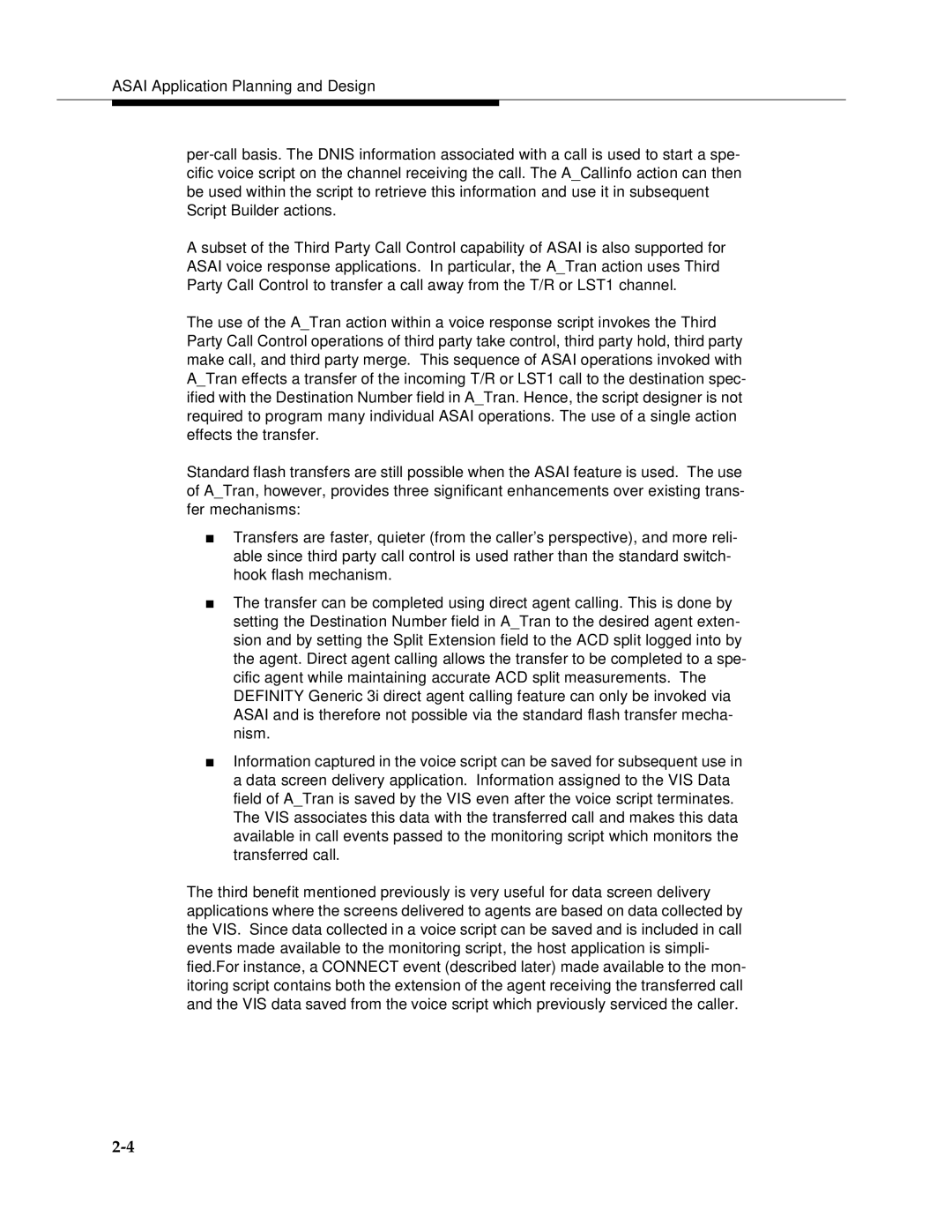ASAI Application Planning and Design
A subset of the Third Party Call Control capability of ASAI is also supported for ASAI voice response applications. In particular, the A_Tran action uses Third Party Call Control to transfer a call away from the T/R or LST1 channel.
The use of the A_Tran action within a voice response script invokes the Third Party Call Control operations of third party take control, third party hold, third party make call, and third party merge. This sequence of ASAI operations invoked with A_Tran effects a transfer of the incoming T/R or LST1 call to the destination spec- ified with the Destination Number field in A_Tran. Hence, the script designer is not required to program many individual ASAI operations. The use of a single action effects the transfer.
Standard flash transfers are still possible when the ASAI feature is used. The use of A_Tran, however, provides three significant enhancements over existing trans- fer mechanisms:
■Transfers are faster, quieter (from the caller’s perspective), and more reli- able since third party call control is used rather than the standard switch- hook flash mechanism.
■The transfer can be completed using direct agent calling. This is done by setting the Destination Number field in A_Tran to the desired agent exten- sion and by setting the Split Extension field to the ACD split logged into by the agent. Direct agent calling allows the transfer to be completed to a spe- cific agent while maintaining accurate ACD split measurements. The DEFINITY Generic 3i direct agent calling feature can only be invoked via ASAI and is therefore not possible via the standard flash transfer mecha- nism.
■Information captured in the voice script can be saved for subsequent use in a data screen delivery application. Information assigned to the VIS Data field of A_Tran is saved by the VIS even after the voice script terminates. The VIS associates this data with the transferred call and makes this data available in call events passed to the monitoring script which monitors the transferred call.
The third benefit mentioned previously is very useful for data screen delivery applications where the screens delivered to agents are based on data collected by the VIS. Since data collected in a voice script can be saved and is included in call events made available to the monitoring script, the host application is simpli- fied.For instance, a CONNECT event (described later) made available to the mon- itoring script contains both the extension of the agent receiving the transferred call and the VIS data saved from the voice script which previously serviced the caller.
